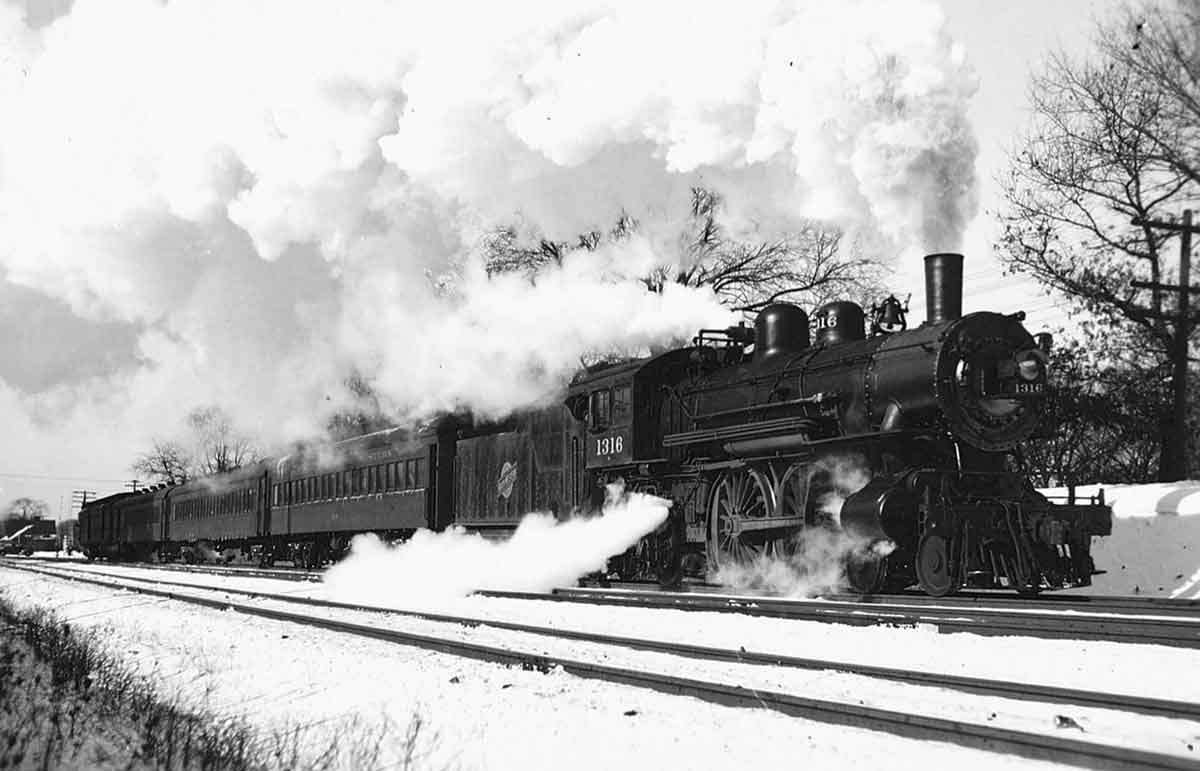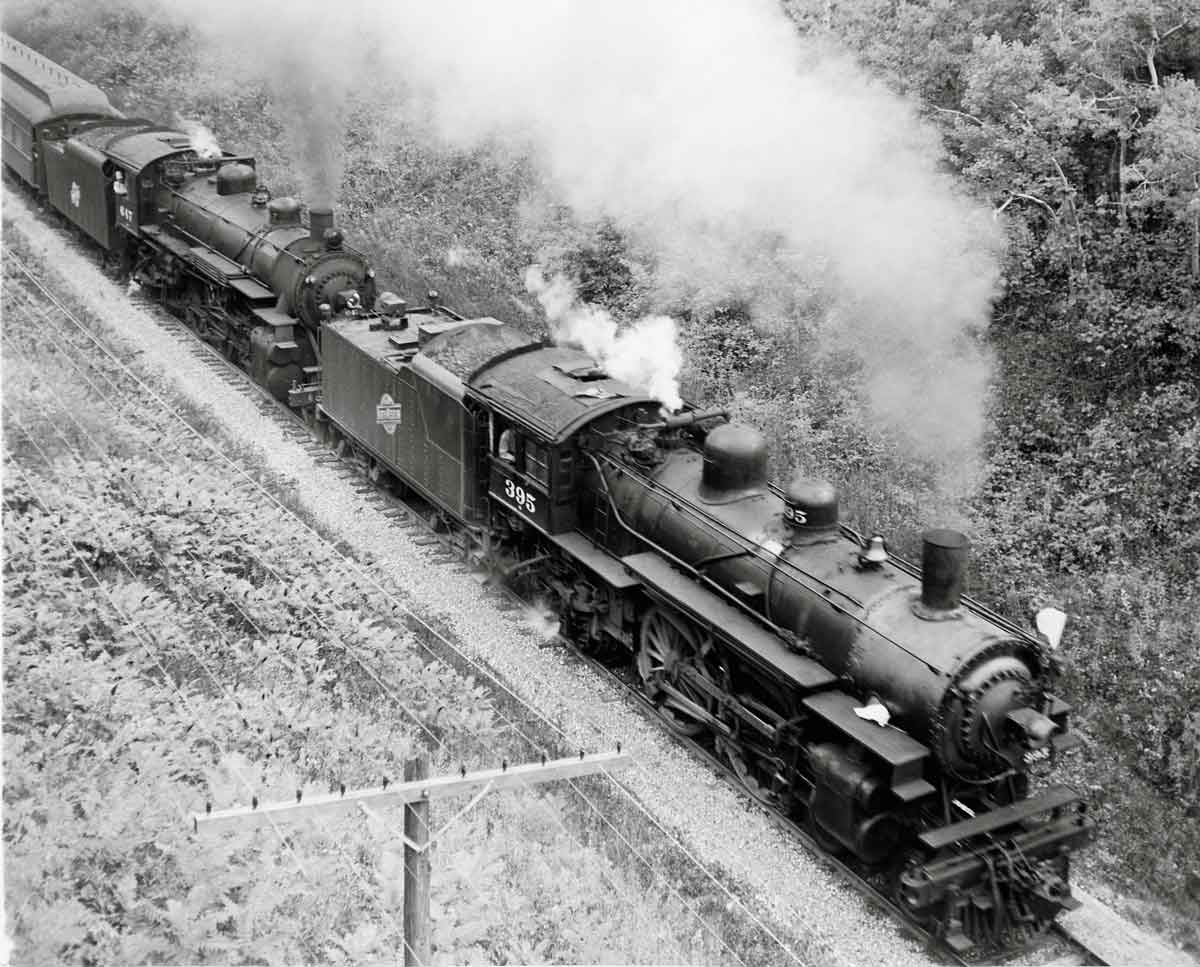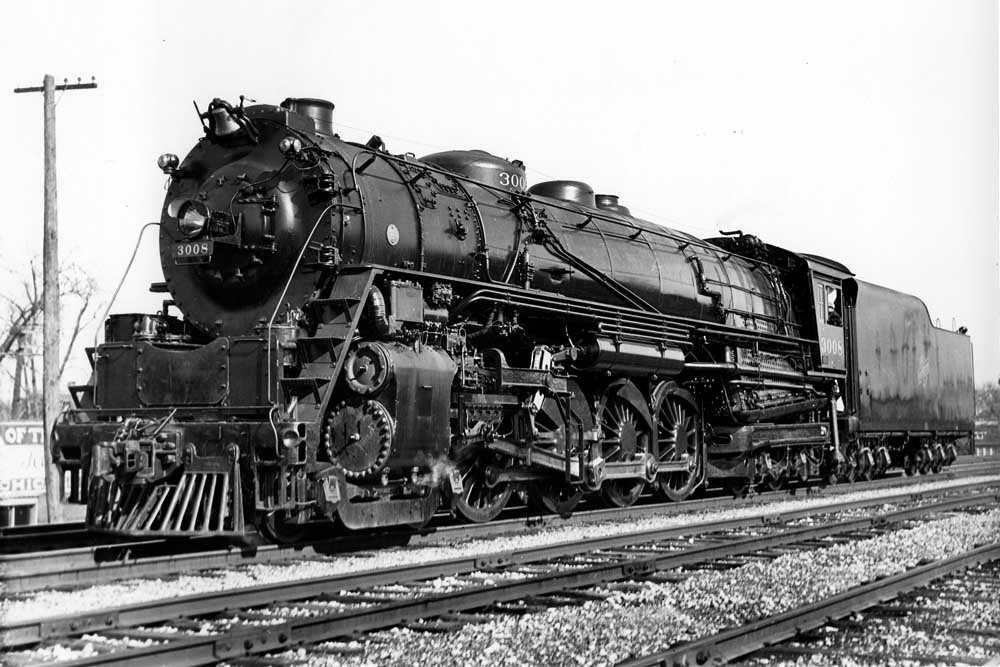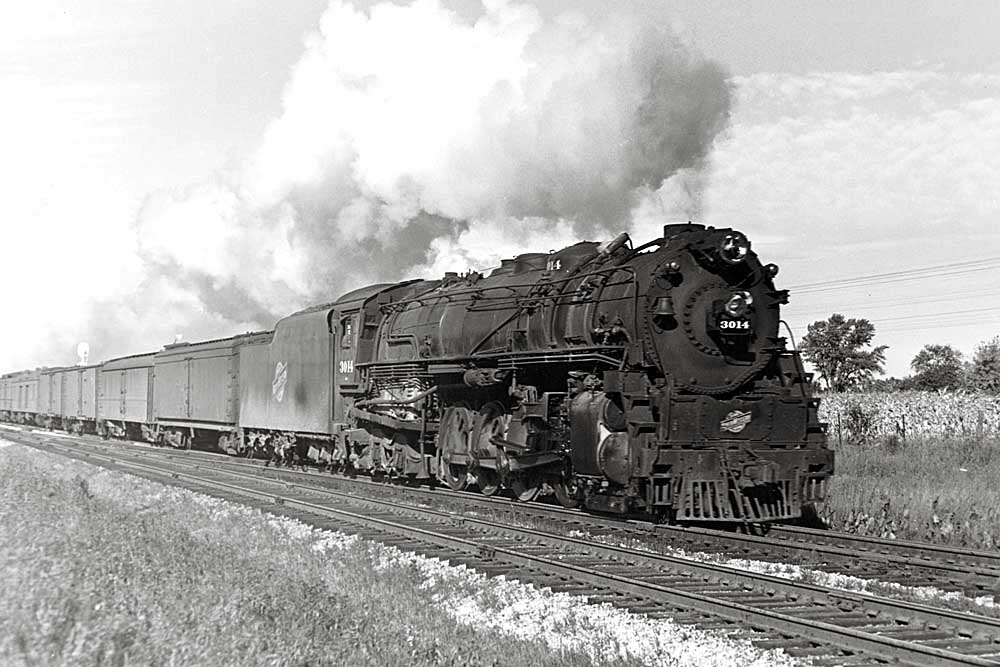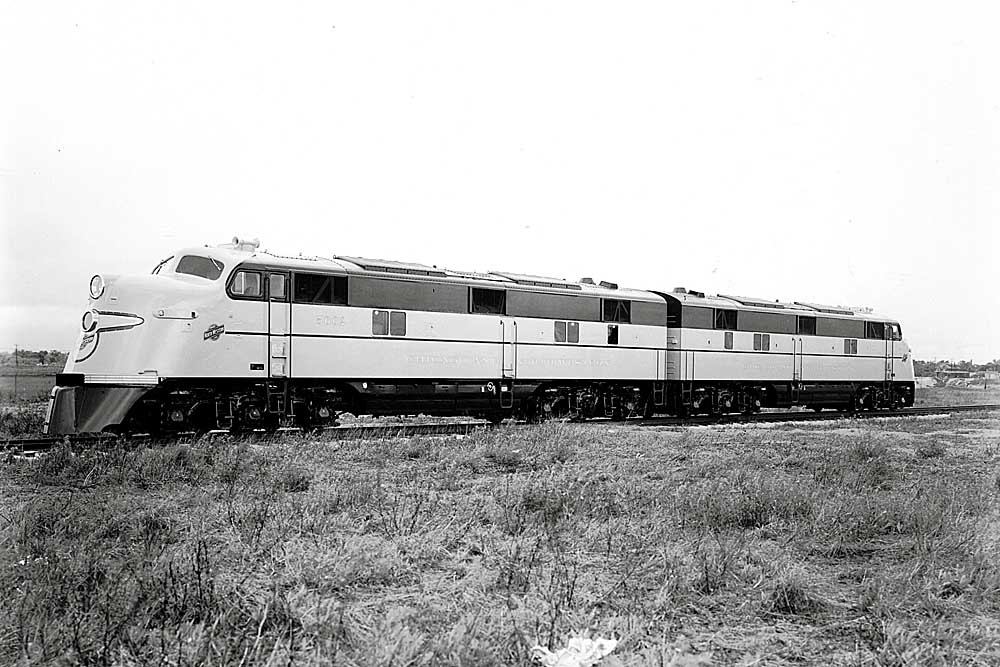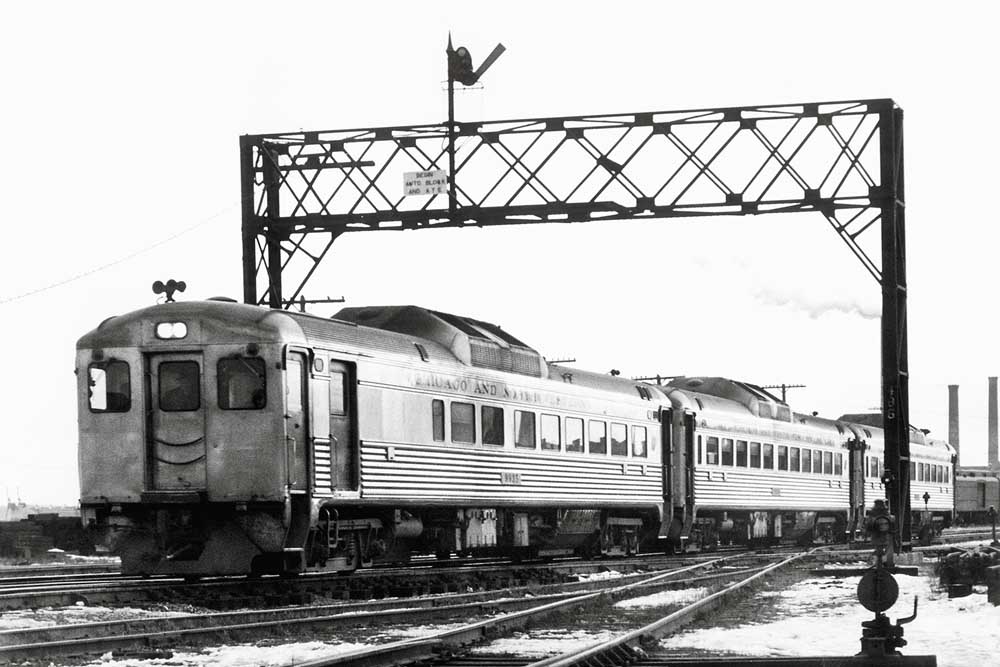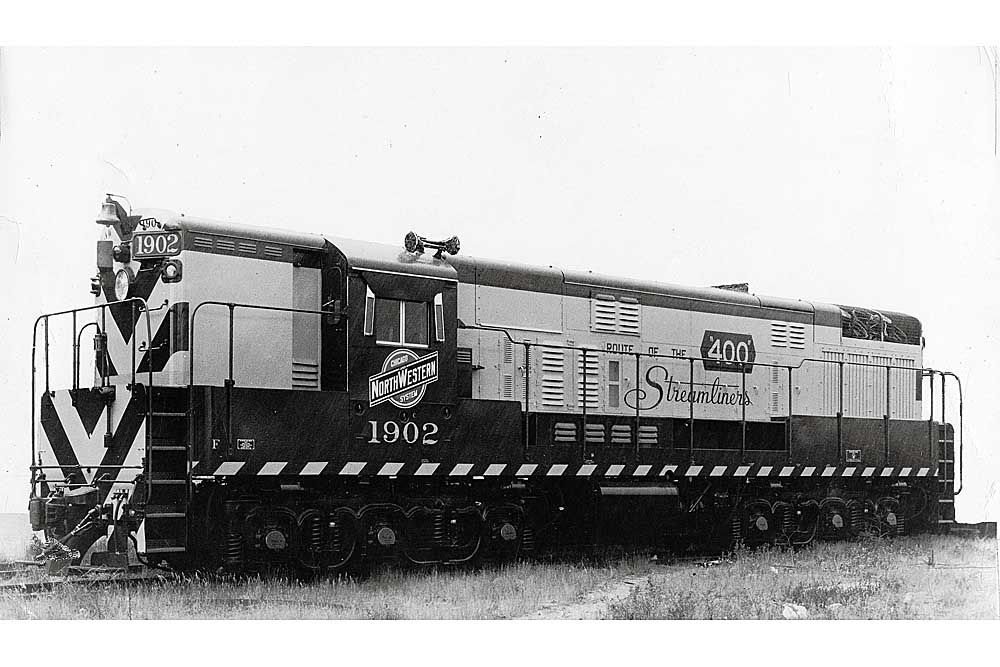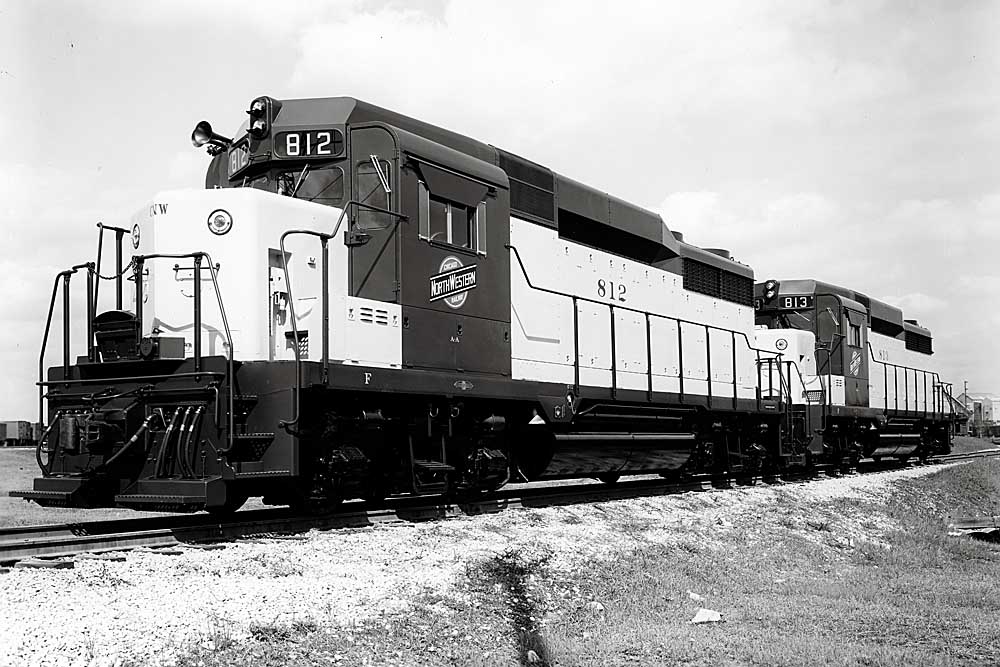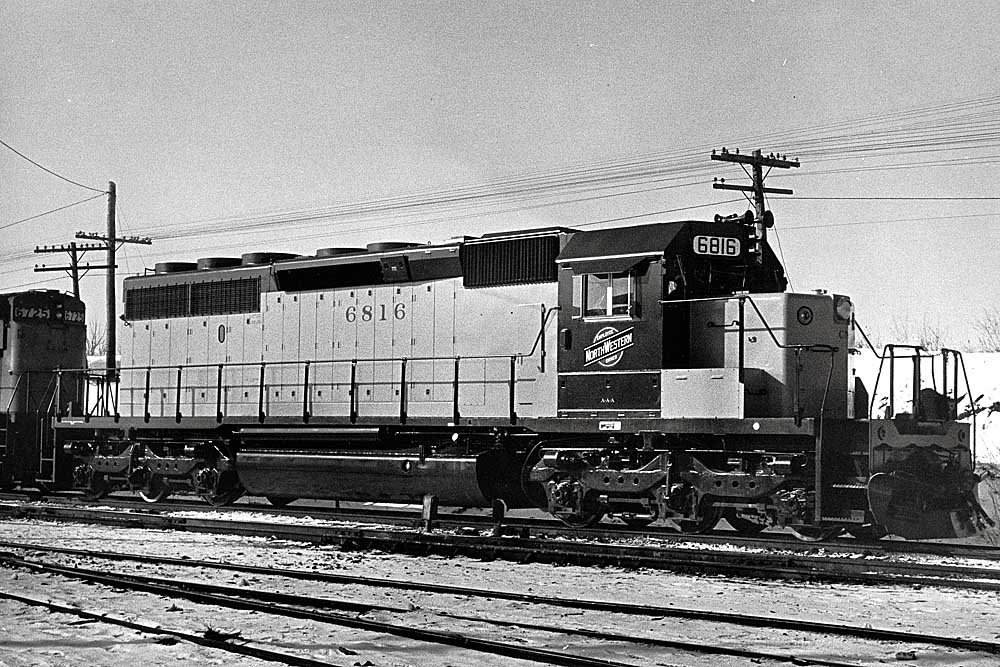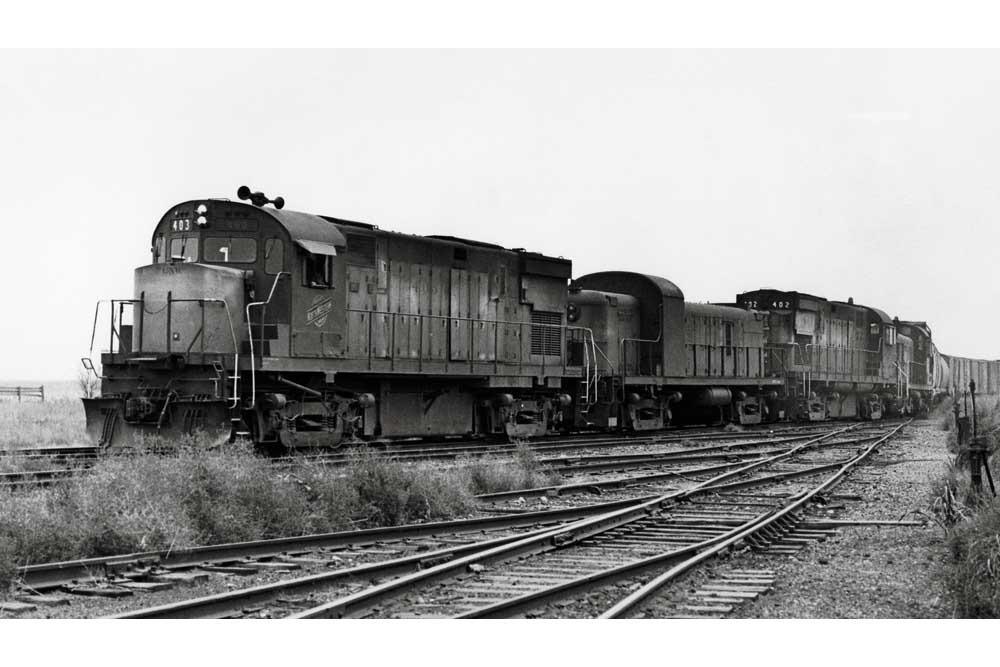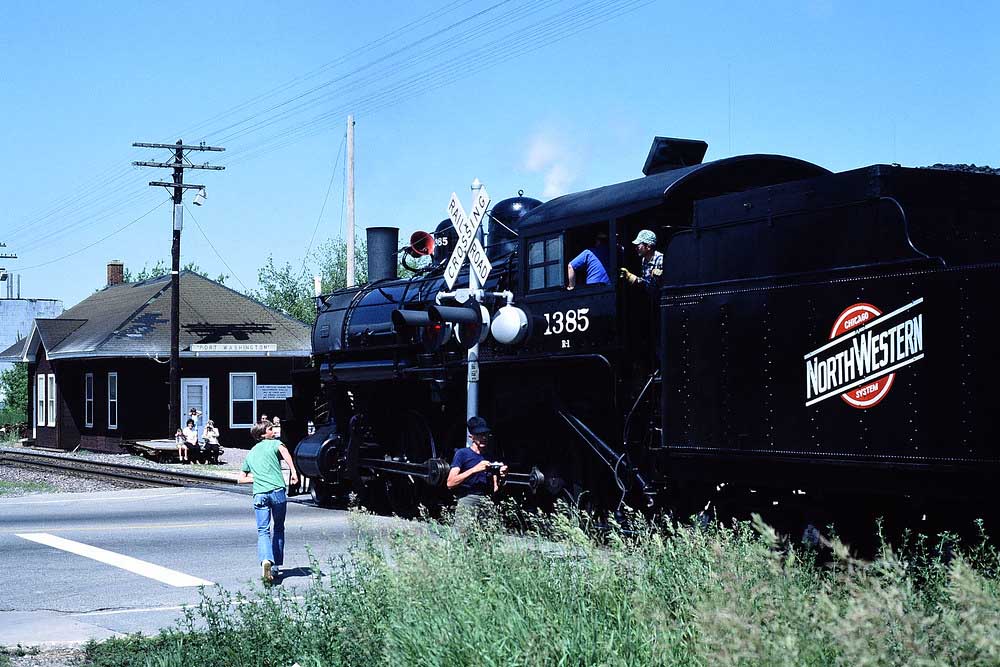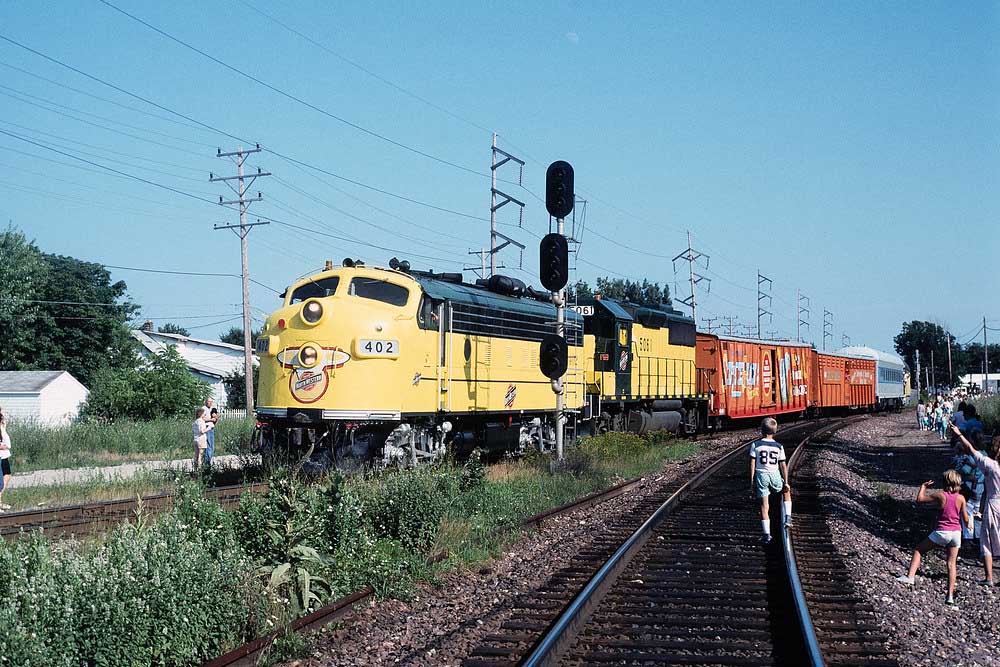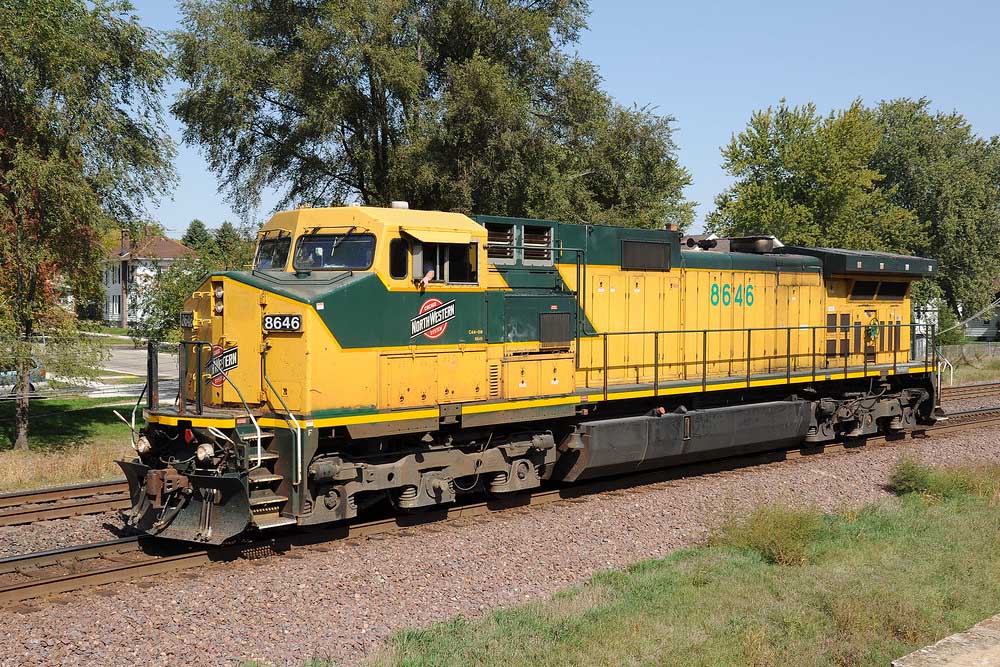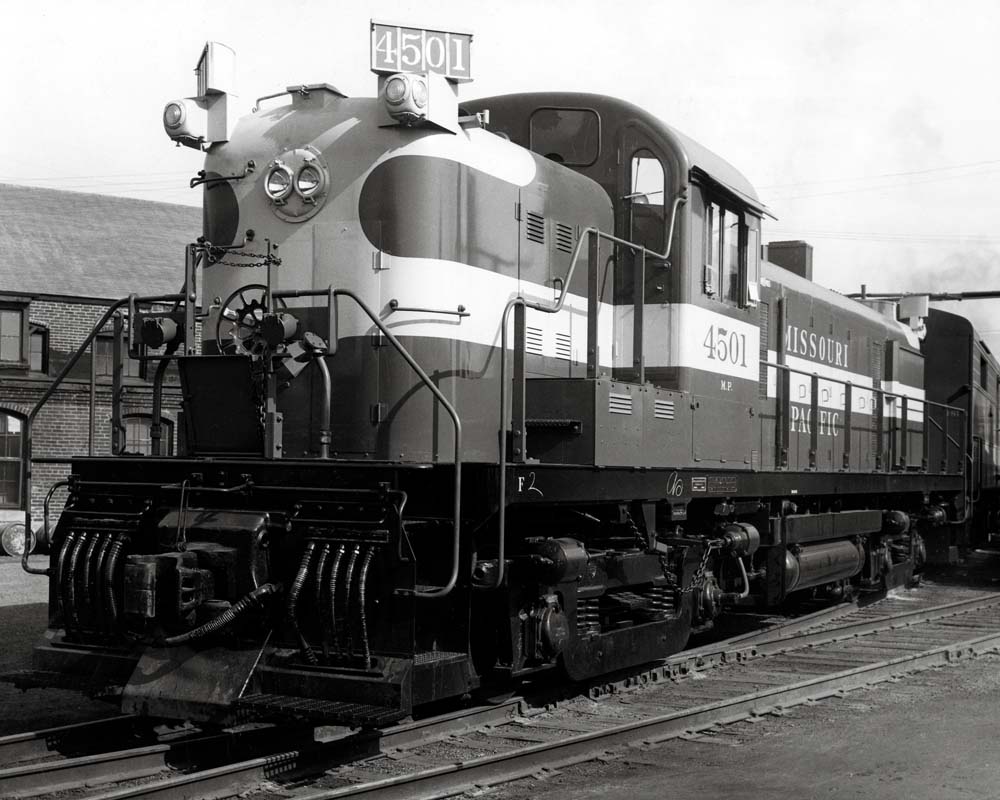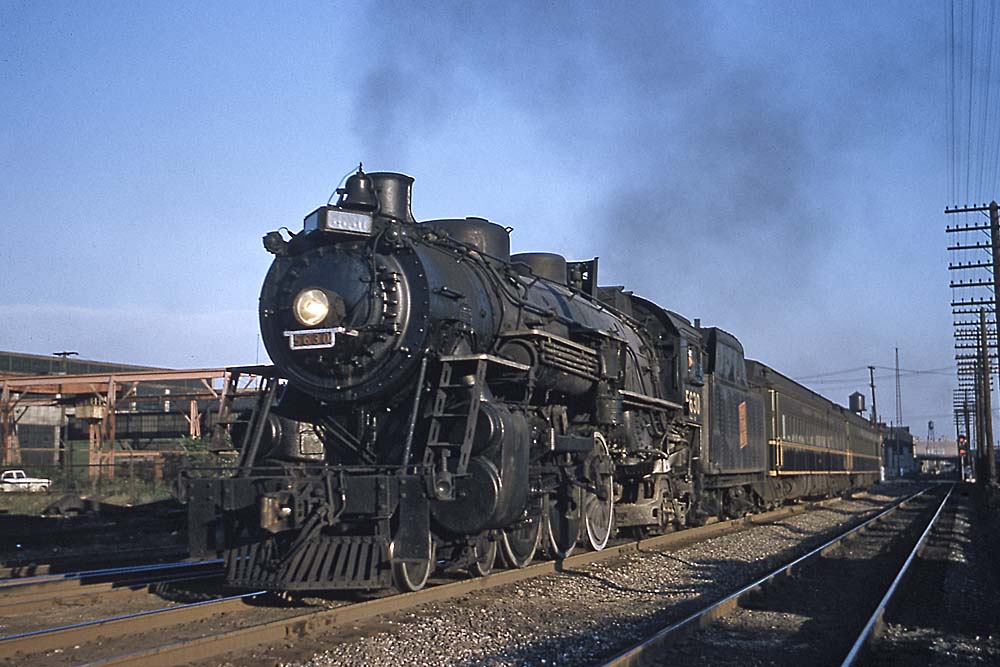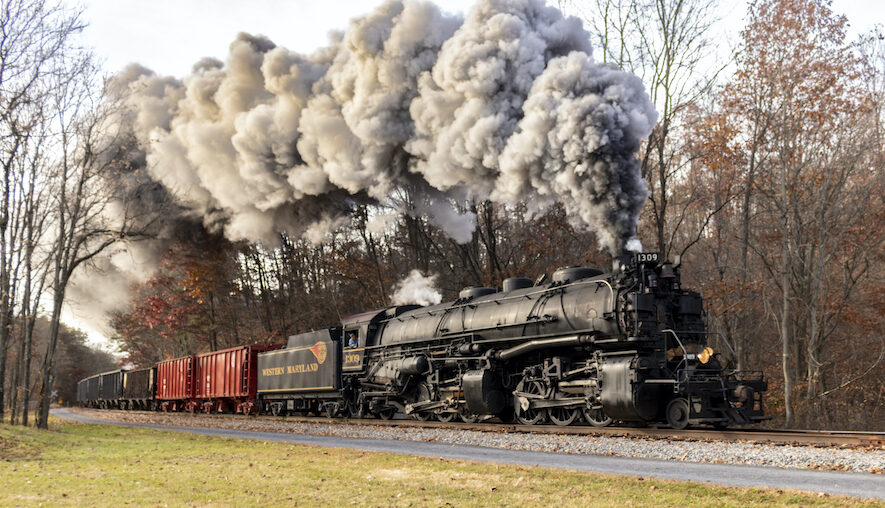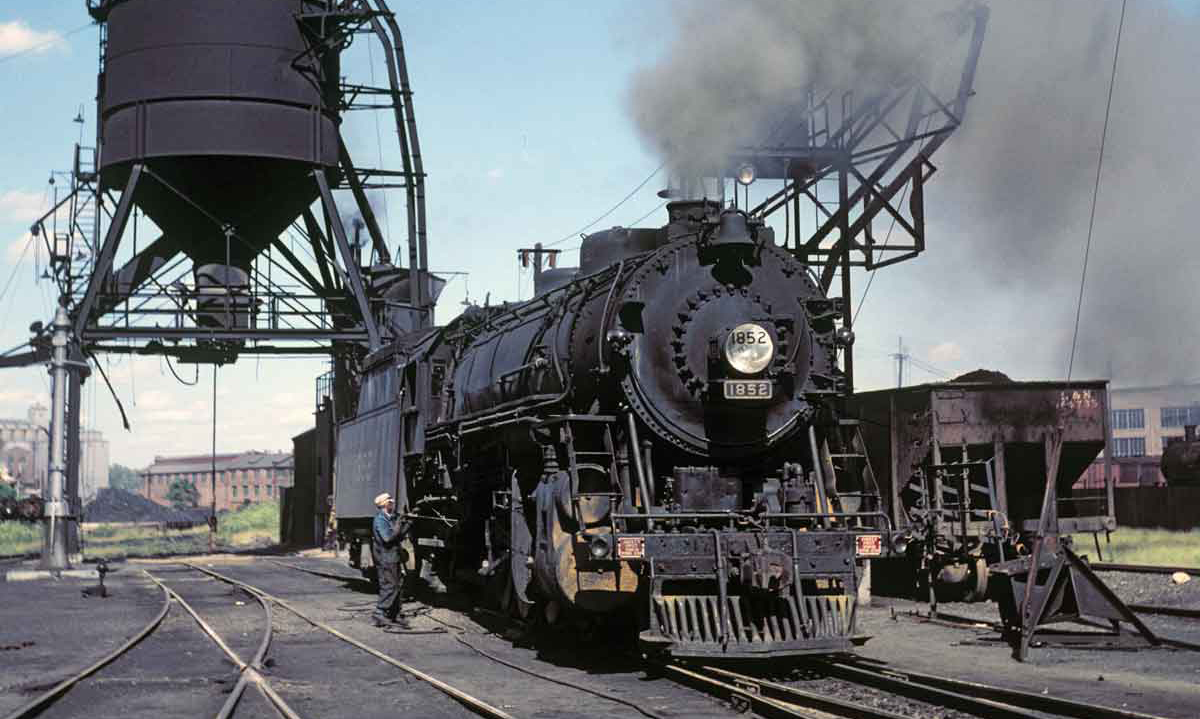In the steam age, most Chicago & North Western locomotives burned coal, but those assigned to divisions west of the Missouri River were oil burners; in addition, the four Pacifics rebuilt for the 400s were converted to oil. One group of light Pacifics was fitted with special grates for burning lignite, a low-grade coal.
Until 1907 the North Western usually did not assign continuous blocks of numbers to groups of locomotives but reused numbers of locomotives that had been retired or scrapped. Photographs show that the 91 Atlantics of the D class, for example, carried random numbers between 152 and 1317. Such a practice confuses historians and can’t have made the job of the motive power superintendent any easier.
May 10, 1956, saw C&NW’s last steam-powered commuter train. A few small steam locomotives remained in service through the summer of 1956, but by fall dieselization was complete.
The Chicago & North Western dieselized with a wide variety of first-generation locomotives, but continued to rebuild older steam locomotives through 1949. Dieselization was complete in 1956. In the 1960s the C&NW began acquiring new second- and third-generation EMDs and GEs along with a fleet of rebuilt locomotives of its own as well as many acquired secondhand.
Into the 1950s, the C&NW had owned a majority of the Chicago, St. Paul, Minneapolis & Omaha (the Omaha Road). The Omaha Road largely operated as a separate company until 1957, including its own locomotives (albeit in a shared paint scheme but with CMO sublettering), but in 1957 the C&NW leased the CStPM&O, ending its independence. The North Western officially merged the Omaha Road in 1972. The North Western merged several other railroads, acquiring their locomotive fleets, including the Litchfield & Madison (1958), Minneapolis & St. Louis (1960), and Chicago Great Western (1968). The C&NW itself lost its identity when it was purchased by (and became part of) Union Pacific in 1995.
The C&NW’s diesel fleet features complicated numbering, with many numbers used multiple times as locomotives left the roster and were replaced by others (including locomotives bought new or acquired used or through mergers). This wasn’t helped as many early diesels were numbered in sequence as they were acquired, leading to multiple number groups of the same model type separated by other types.





